February is National Heart month and this time of the year we are reminded that our daughter’s heart works so hard in order to provide her lungs with oxygen-poor blood and her body with oxygen-rich blood. Today I want to share our VSD story.
Our daughter Esther is our miracle baby. After hanging our son Peter we had 3 miscarriages and never thought we would have another baby. But God had other plans and blessed us with our daughter Esther. She was such a beautiful and quite baby. We had not realized that she had a VSD until she was 1 1/2 years old. The doctors never caught it. She was healthy and active. However, at around 2 1/2 years old our cardiologist convinced us that our daughter should get a heart surgery. At that time I was pregnant with our third child and our Elizabeth would have been only a couple of weeks old when Esther’s heart surgery was scheduled. You can only imagine what was going through my mind. I had a hard time understanding how I was supposed to be there for our sweet Esther and care for our infant at the same time. I remember crying so much once we had scheduled Esther heart surgery. I never knew that one could cry so many tears. The thought of heart surgery paralyzed me. When we drove to San Francisco to meet the surgeon with my husband, we prayed the whole way there. Heart surgery is so scary and we wanted to do what God wanted us to do. When we met our daughters surgeon he advised to wait because Esther was gaining weight, looked healthy, and was active. He advised us to do more tests and if those tests had good results than there was no need to rush and have our daughter get heart surgery. Those tests turned out really good and our cardiologist said that those results could not be possible. However, we know that with God all things are possible. Our daughter is now ten years old and goes to the doctors once a year to get a Echocardiograph and EKG test done. The left side of her heart ( left ventricle) is larger because of her VSD and if you listen to her heart beat you can hear a heart murmur in her heart. She is very active and is such a great helper. We are praying that God would heal her and believe in how powerful God is. We also know that doctors are amazing and that if need be she will have to have heart surgery. We go each day without really realizing that there is something different with our daughter. However, when we visit the cardiologist we are always reminded that she has VSD and that something wrong could go wrong and she would need to have heart surgery. We are trusting God every step of the way and are thanking him for our dearest Esther.
What is VSD?
In order for our children to understand what VSD is we have to first teach our children how a normal heart works.
Our heart has two sides. These sides are separated by an inner wall called septum. Every time your heart beats, the right side of your heart receives oxygen-poor blood from your body and pumps in to your lungs. The left side receives oxygen-rich blood from your lungs and pumps it to your body.
The heart has four chambers. The two upper chambers are known as atria (right and left) they collect blood as it comes into the heart. The two lower chambers are called ventricles (right and left) and they pump blood out of the heart to lungs or other parts of the body.
In a normal heart the right side of the heart pumps blood to the lungs to pick up oxygen. Then the oxygen-rich blood returns from the lungs to the left side of the heart where then the left side pumps it to the body.
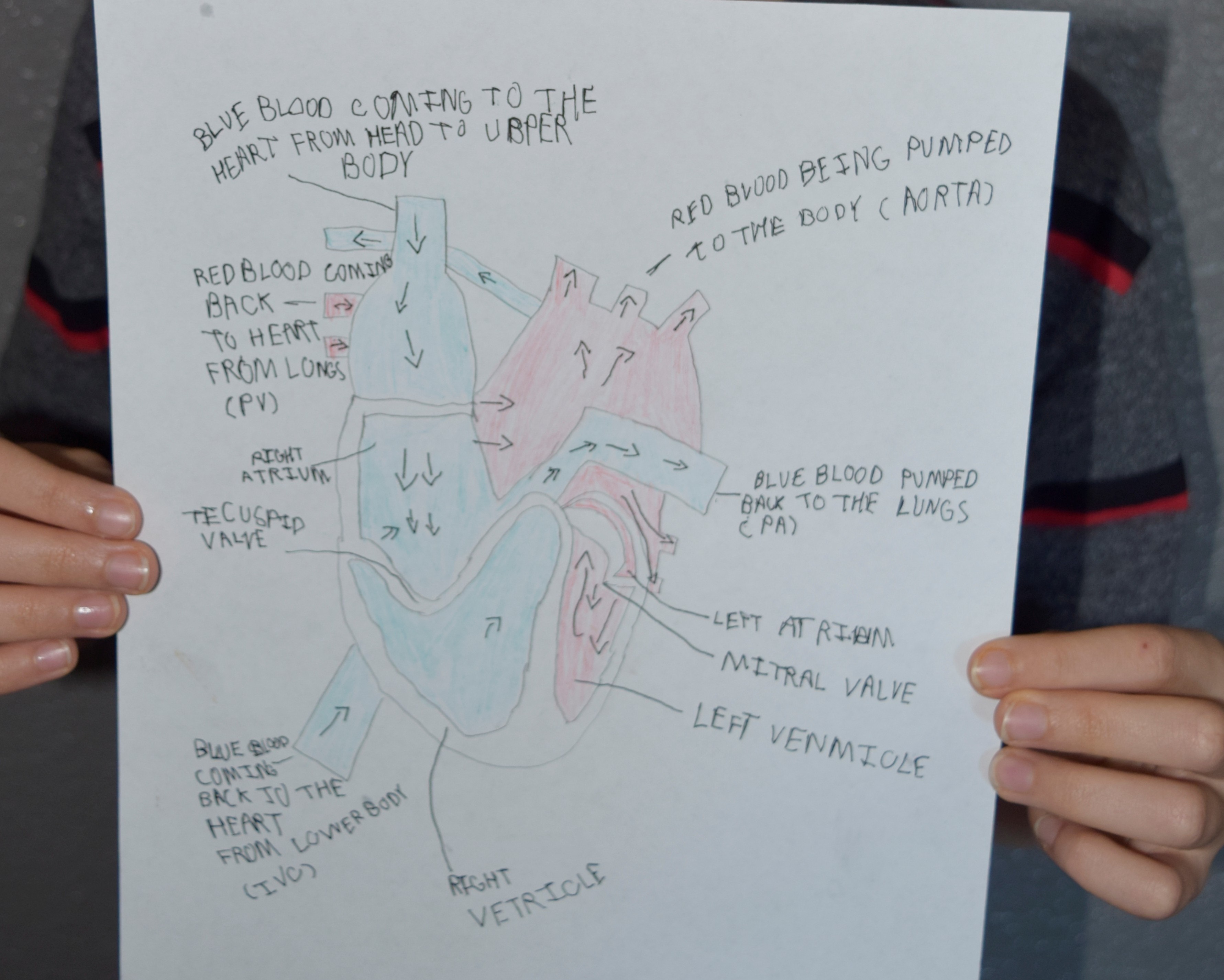
“When blood circulates in the body, it enters the heart through the right atrium, passes through to the right ventricle, and flows out through the pulmonary artery to the lungs, where it picks up oxygen and gets rid of carbon dioxide. From the lungs, blood returns to the left atrium and then enters the left ventricle, where it is pumped to the body through the aorta.”
VSD stands for Ventricular Septal Defect. Remember I said that a septum separates the two sides of the heart? Well in a child who has VSD there is a hole in the septum. Particularly between the right ventricle and the left ventricle. This allows blood to pass from the left side of her heart to the right side. So oxygen-rich blood can mix with oxygen-poor blood. When this happens some of the oxygen-rich blood will be pumped to the lungs instead of the body.
VSDs can be small to large. Small VSDs usually close on their own. Medium VSDs are less likely to close on their own and usually need surgery. Our daughter has a medium VSD. Large VSDs usually require surgery.
Children who have a VSD and are not gaining weight or have a hard time breathing when running or doing normal activities usually get surgery.
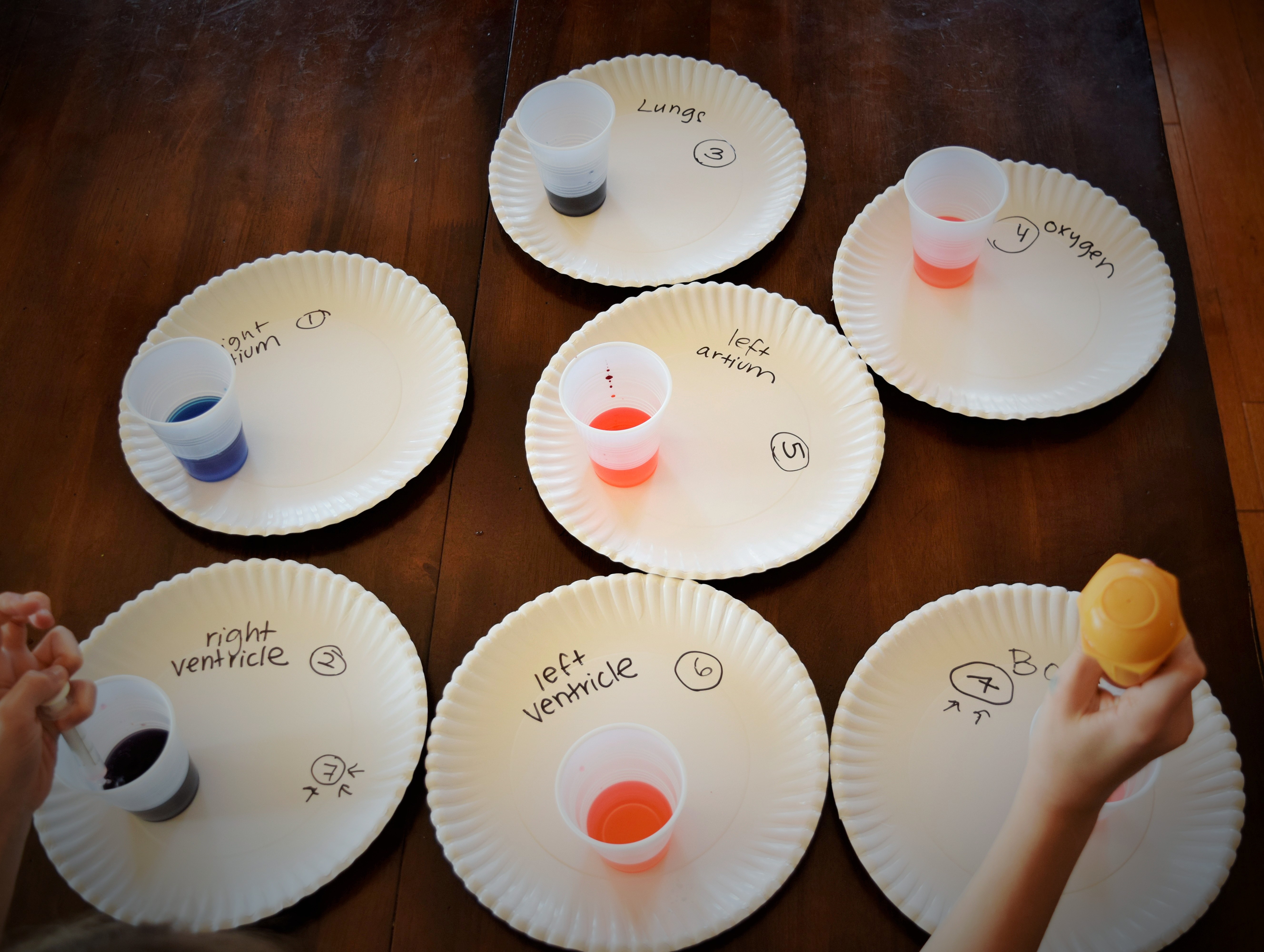
“When blood circulates in the body, it enters the heart through the right atrium, passes through to the right ventricle, and flows out through the pulmonary artery to the lungs, where it picks up oxygen and get rid of carbon dioxide. From the lungs, blood returns to the left atrium and then enters the left ventricle… the hole allows some blood in the left ventricle to go through the hole and back into the right ventricle and to the lungs…instead of out through the aorta..majority of the blood will at the same time will enter the left ventricle, where it is pumped to the body through the aorta. ”

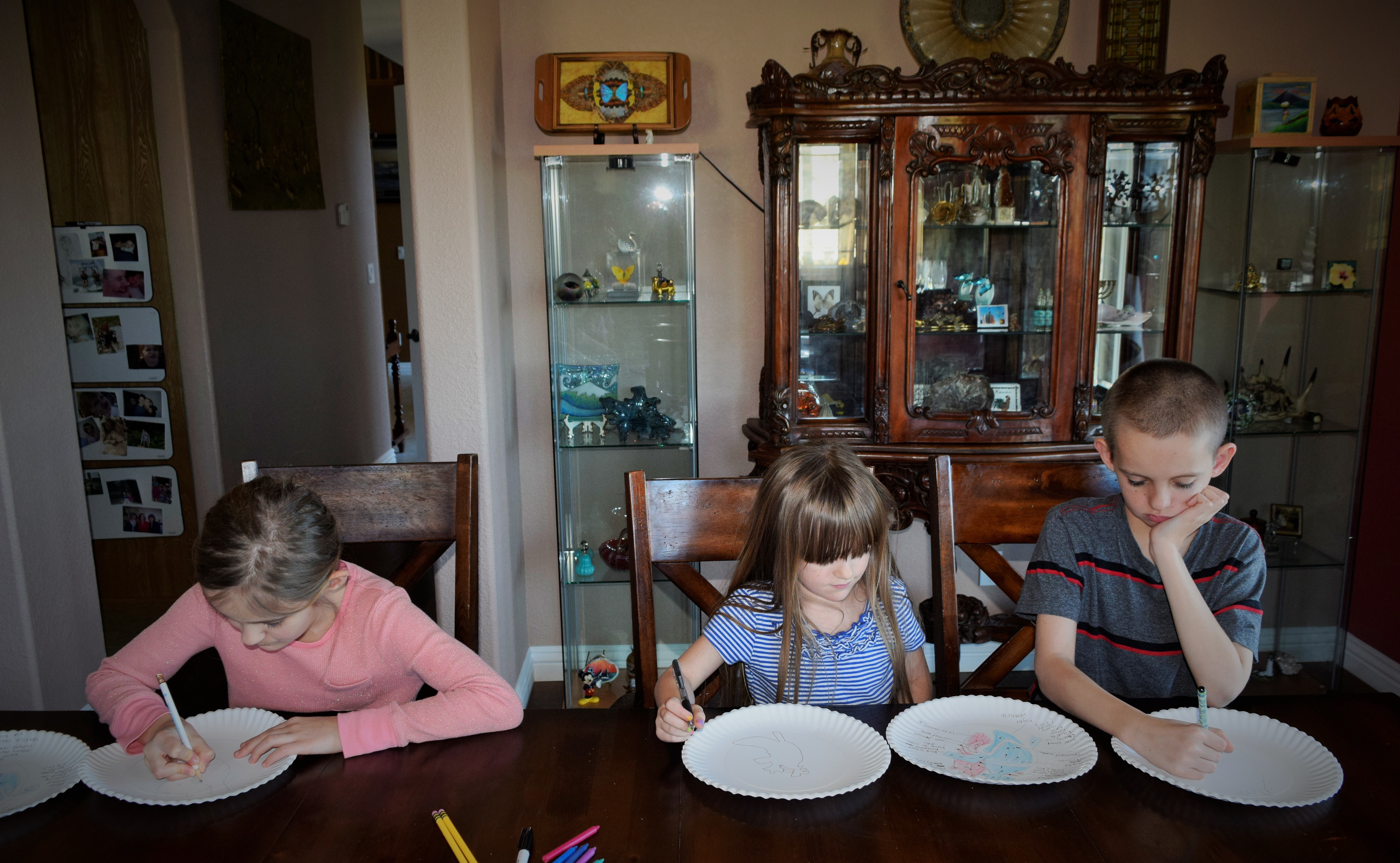
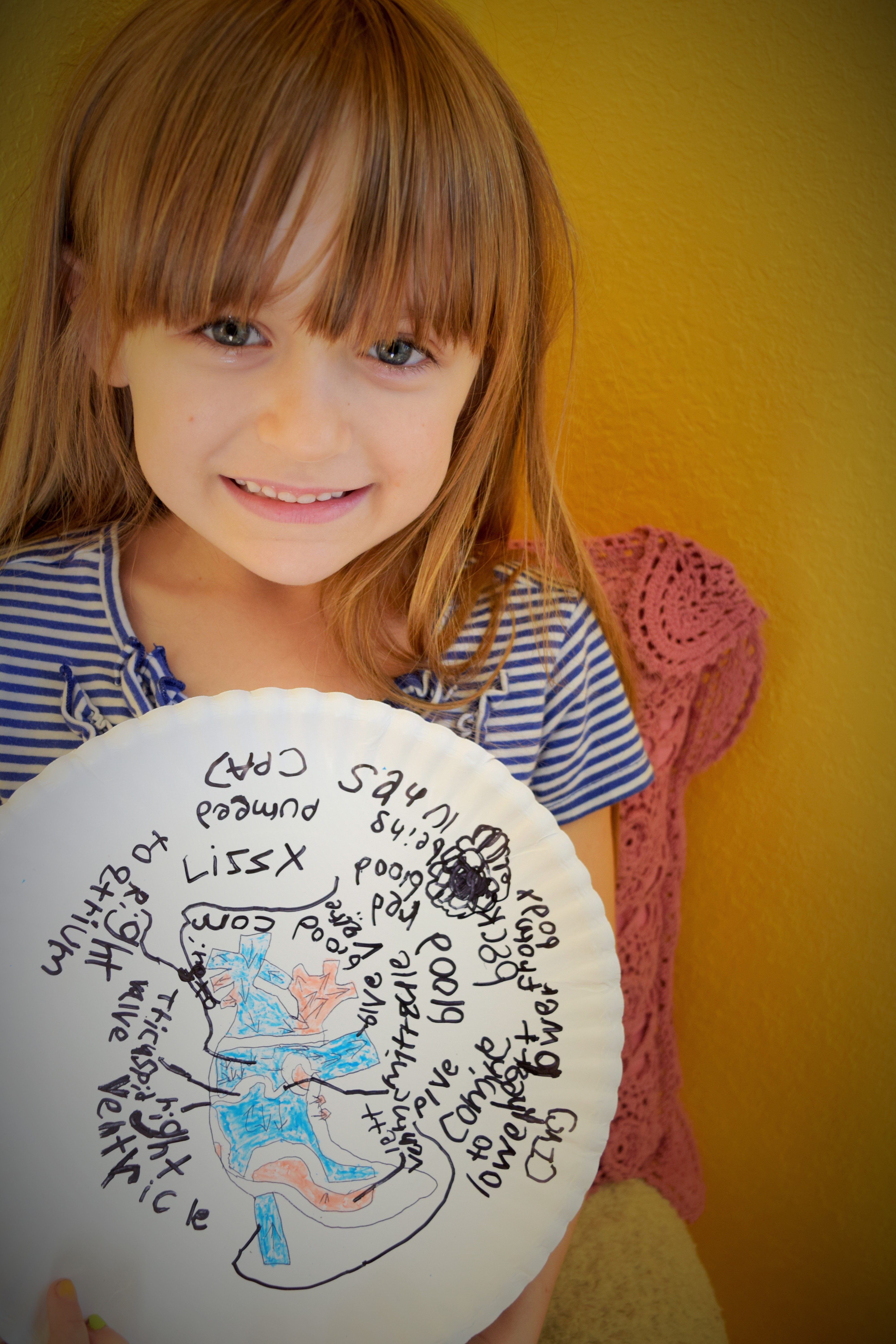
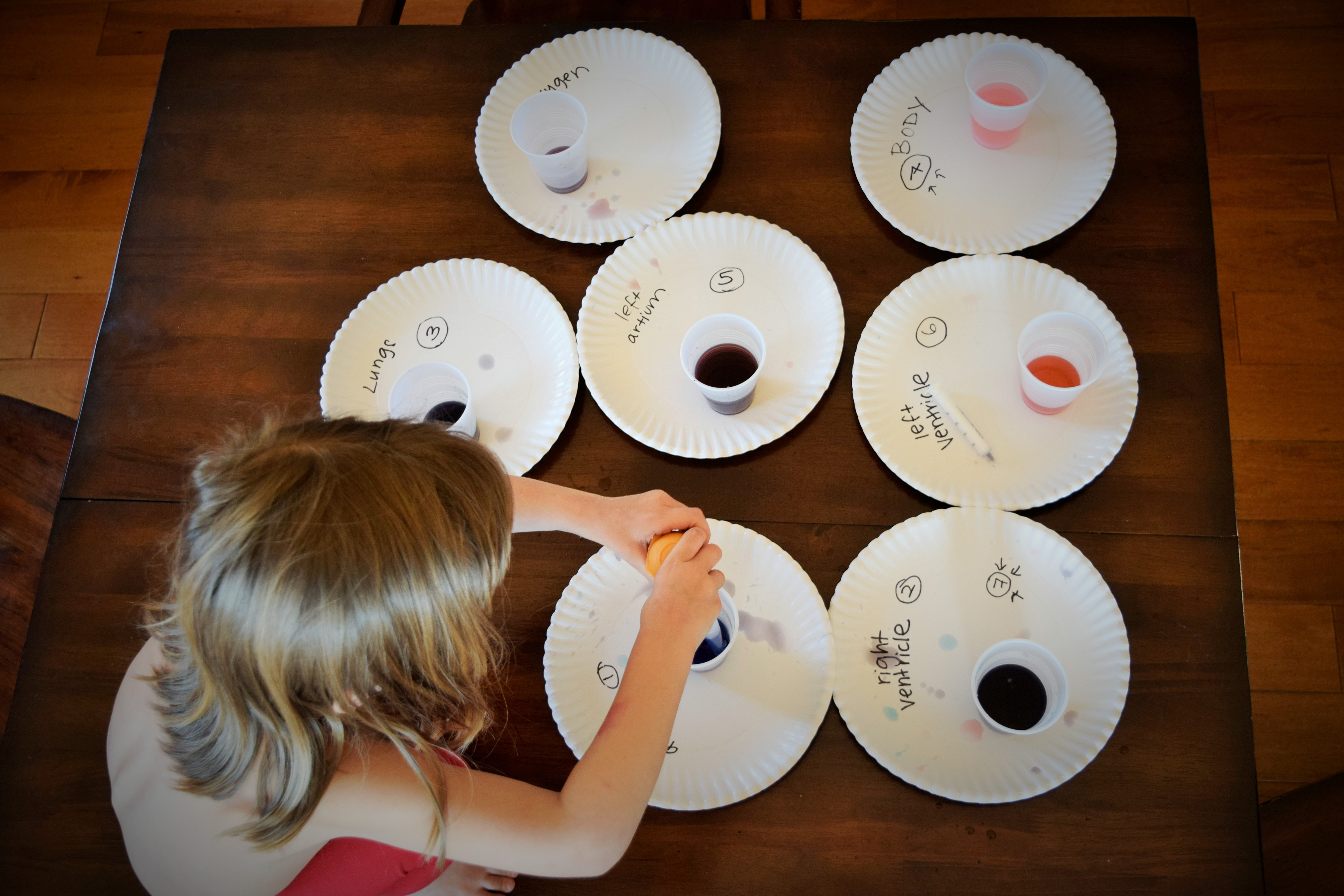
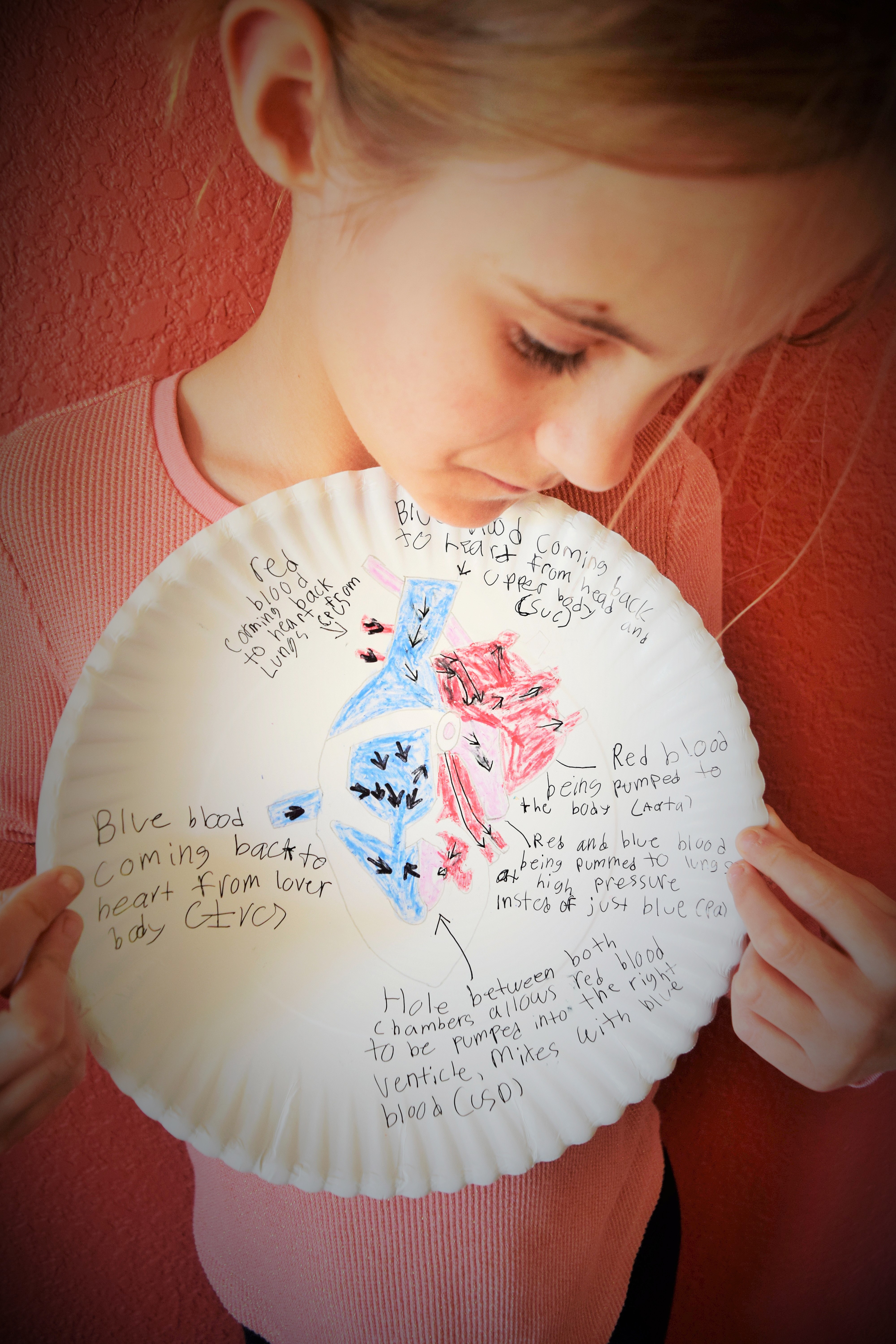
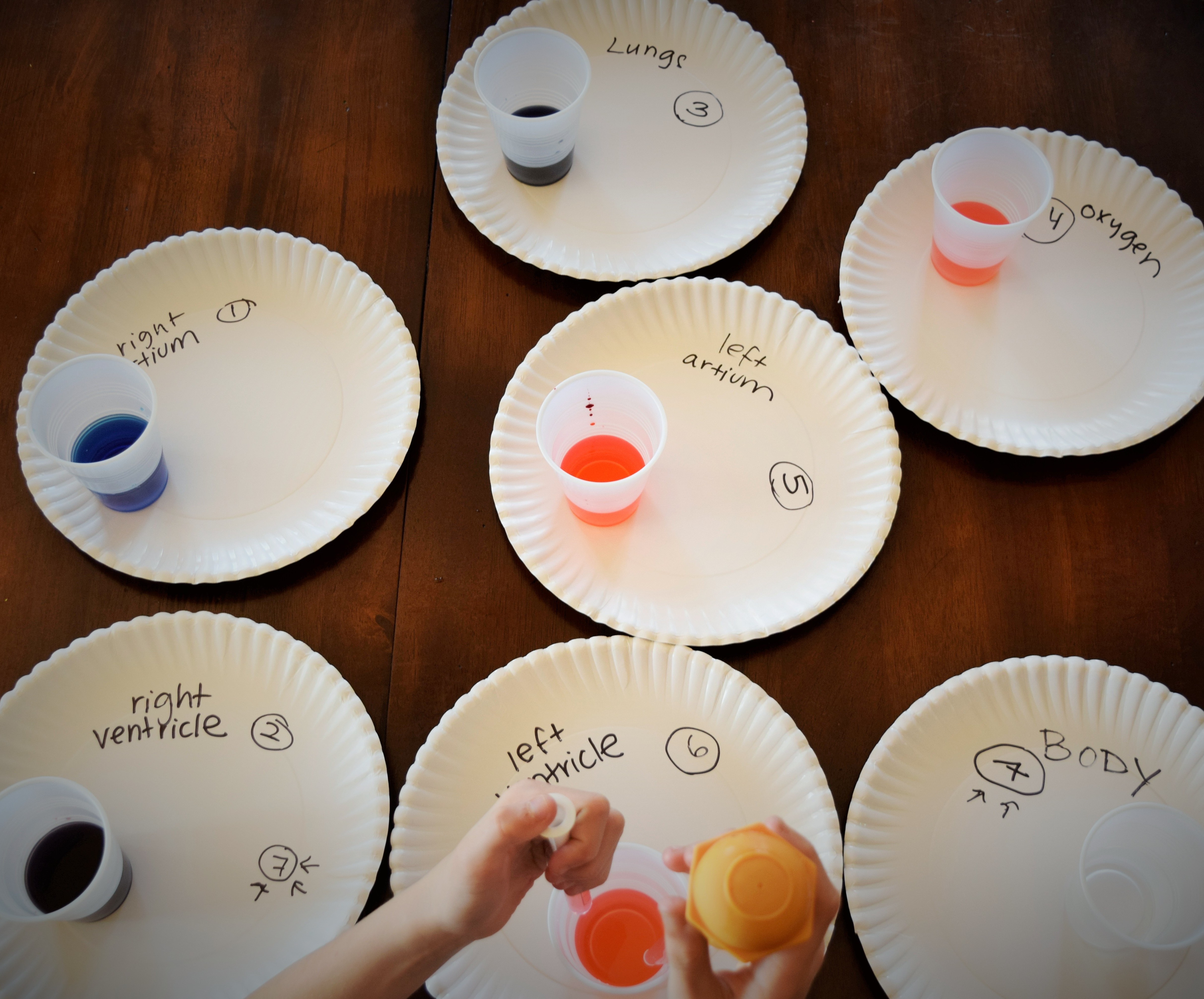
Faith Outspoken Ministry
Thank you so much for sharing your experience with VSD! This would certainly be great information for everyone to learn! You have inspired me to cover the heart in my homeschool in more depth! Thank you! What endurance your family must have grown through these trials. God bless you all. Your children look so joyful, and brave! Just like their mommy and daddy, I’m sure!
Be blessed!
Jacqueline McNulty
Wow! Amazing project and visual explanation! Love this and love how it includes the whole family learning about a heart condition! ?